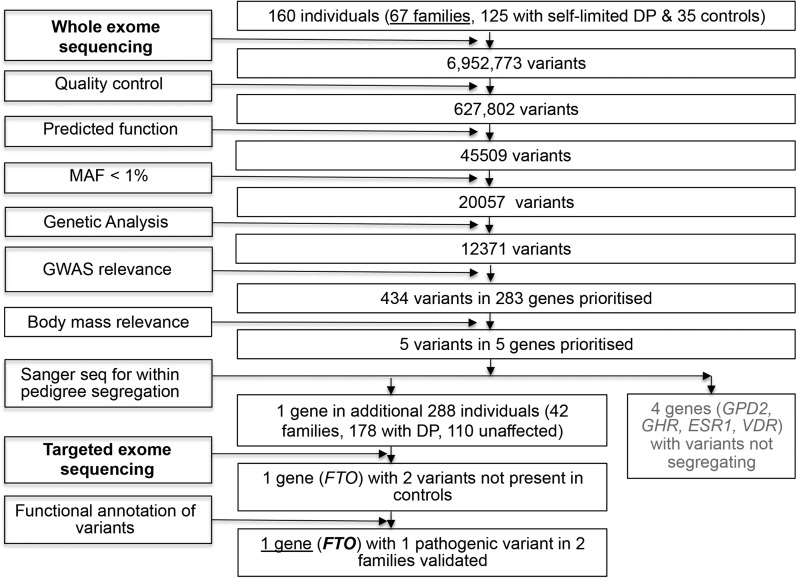Figure 1.
Flowchart of WES filtering strategy to identify candidate genes. WES was initially performed on DNA extracted from peripheral blood leukocytes of 160 individuals from the 67 most extensive families from our cohort (125 with DP and 35 controls), with exome capture on a Nimblegen v2 or Agilent v5 platform and sequencing on the Illumina HiSeq 2000. The exome sequences were aligned to the University of California, Santa Cruz hg19 reference genome. Picard tools and the genome analysis toolkit were used to mark PCR duplicates, realign around indels, and recalibrate quality scores and call variants. Variants were then analyzed further and filtered for potential causal variants using filters for quality control, predicted functional annotation, minor allele frequency (MAF), segregation with trait, and GWAS relevance (see Materials and Methods for further information on filtering criteria). Targeted exome sequencing using a Fluidigm array of a candidate gene identified after filtering was then performed in a further 42 families from the same cohort (288 individuals, 178 with DP and 110 controls). Variants after targeted resequencing were filtered using the same criteria as the WES data. Functional annotation of the variants is as described elsewhere in Materials and Methods.

